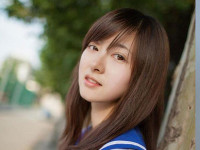Event order
来源:互联网 发布:如何提高淘宝心的级别 编辑:程序博客网 时间:2024/05/18 01:16
Two models
W3C model
The web developer, can choose whether to register an event handler in the capturing or in the bubbling phase.
This is done through the addEventListener() method. If its last argument is true the event handler is set for the capturing phase, if it is false the event handler is set for the bubbling phase.
该函数最后一个参数设为真,把事件句柄注册在捕捉阶段,如果设为假,则把事件句柄注册在冒泡阶段。
Example
element1.addEventListener('click',doSomething2,true)element2.addEventListener('click',doSomething,false)If the user clicks on element2 the following happens:
- The
clickevent starts in the capturing phase. The event looks if any ancestor element of element2 has aonclickevent handler for the capturing phase. - The event finds one on element1.
doSomething2()is executed. - The event travels down to the target itself, no more event handlers for the capturing phase are found. The event moves to its bubbling phase and executes
doSomething(), which is registered to element2 for the bubbling phase. - The event travels upwards again and checks if any ancestor element of the target has an event handler for the bubbling phase. This is not the case, so nothing happens.
element1.addEventListener('click',doSomething2,false)element2.addEventListener('click',doSomething,false)Now if the user clicks on element2 the following happens:
- The
clickevent starts in the capturing phase. The event looks if any ancestor element of element2 has aonclickevent handler for the capturing phase and doesn’t find any. - The event travels down to the target itself. The event moves to its bubbling phase and executes
doSomething(), which is registered to element2 for the bubbling phase. - The event travels upwards again and checks if any ancestor element of the target has an event handler for the bubbling phase.
- The event finds one on element1. Now
doSomething2()is executed.
Compatibility with traditional model
In the browsers that support the W3C DOM, a traditional event registration
element1.onclick = doSomething2;
is seen as a registration in the bubbling phase.
Turning it off
What you first need to understand is that event capturing or bubbling always happens, any event ends up on the document.
Usually you want to turn all capturing and bubbling off to keep functions from interfering with each other. Besides, if your document structure is very complex (lots of nested tables and such) you may save system resources by turning off bubbling.
当你的页面非常复杂时,你会想要关掉捕捉和冒泡功能,以防止互相干扰和节省系统资源。
The browser has to go through every single ancestor element of the event target to see if it has an event handler. Even if none are found, the search still takes time.
window.event.cancelBubble = true; // Microsoft modele.stopPropagation(); // W3C model
For a complete cross-browser experience do
function doSomething(e){ if (!e) var e = window.event; e.cancelBubble = true; if (e.stopPropagation) e.stopPropagation();}Setting the cancelBubble property in browsers that don’t support it doesn’t hurt.CurrentTarge
An event has a target or srcElement that contains a reference to the element the event happened on.
It is very important to understand that during the capturing and bubbling phases (if any) this target does not change.
element1.onclick = doSomething;element2.onclick = doSomething;If the user clicks on element2
doSomething() is executed twice. But how do you know which HTML element is currently handling the event?target/srcElement don’t give a clue, they always refer to element2 since it is the original source of the event.To solve this problem W3C has added the
currentTarget property. It contains a reference to the HTML element the event is currently being handled by.Unfortunately the Microsoft model doesn’t contain a similar property. You can also use thethis keyword.
jQuery .bind() vs .on()
.bind() Attach a handler to an event for the elements.
.on() Attach an event handler function for one or more events to the selected elements.
When an event reaches an element, all handlers bound to that event type for the element are fired. If there are multiple handlers registered, they will always execute in the order in which they were bound. After all handlers have executed, the event continues along the normal event propagation path.
文章地址:点击打开链接
- Event order
- Event order
- Event Order
- Javascript两种event order
- 1Order Event Handler guide
- Hierarchical order in Flex event Model
- 官方文档Execution Order of Event Functions
- order
- ORDER
- Order
- The run order about Loaded event and OnApplyTemplate in custom control of Silverlight 2 beta 2
- Event
- Event
- Event
- Event
- Event
- event
- event
- 前台截取一定长度的后台返回文字,并在后面加省略号
- 不能将值 NULL 插入列 'id',表 'weibo.dbo.myfriend';列不允许有空值。INSERT 失败。
- Leetcode 动态规划 Unique Paths II
- Node.js 博客实例(十六)日志功能
- 安装配置cacti
- Event order
- Kinect SDK 头文件错误
- XDOJ1138 - 祯爷的苹果
- Scrapy入门教程
- matlab calibration toolbox -- matlab标定工具的使用方法--去畸变和双目校正
- 安装配置nagios
- LeetCode:Binary Tree Postorder
- DeepPose: Human Pose Estimation via Deep Neural Networks(精读)
- Waiting on Groups of Queued Tasks (dispatch_group_async)





